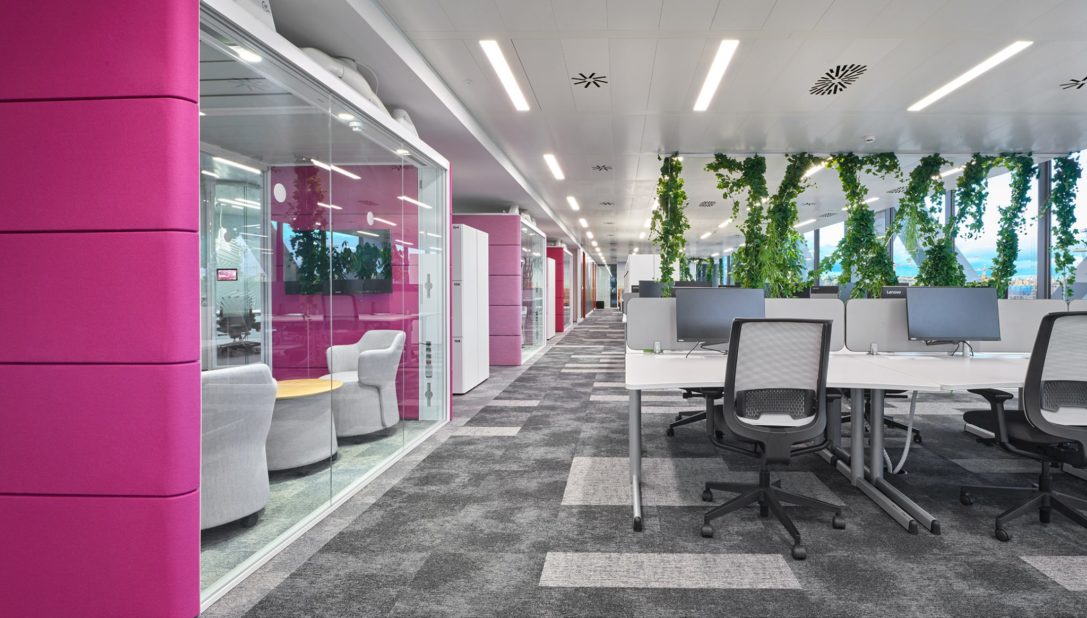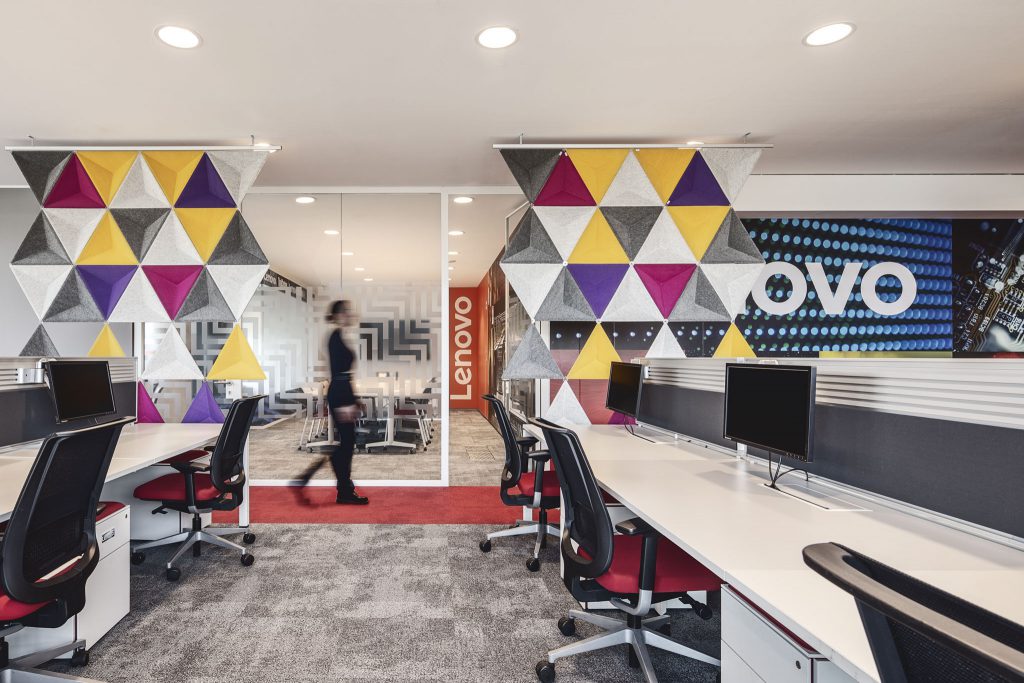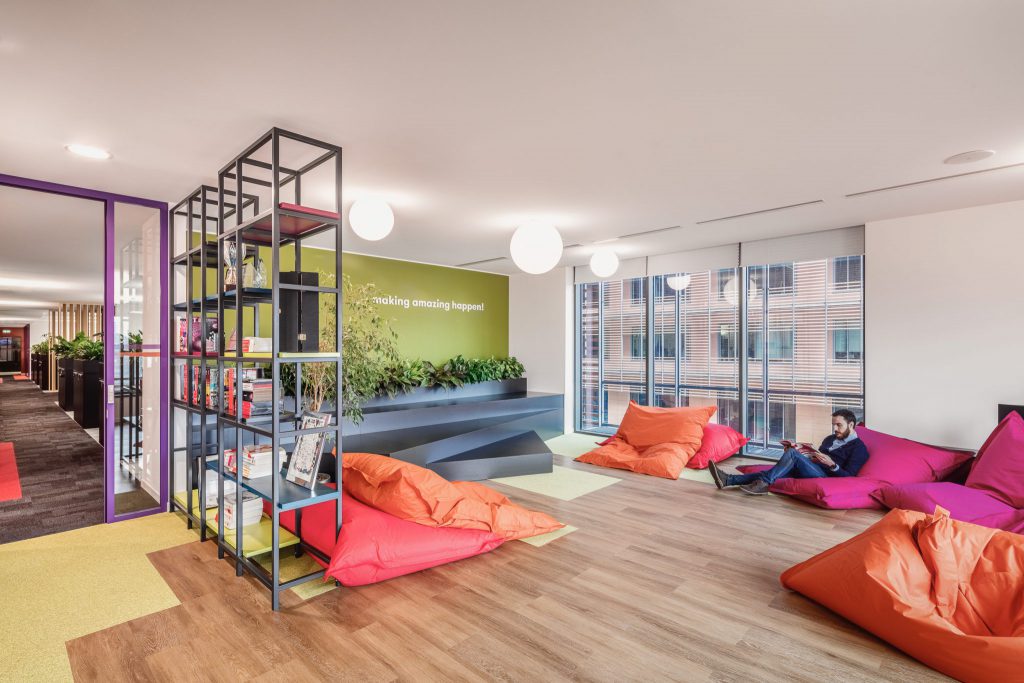Designing a space around mental wellbeing is key to creating a healthy – and inspiring – work environment.
Amid shifting guidelines for how and when to return to work, there is a growing focus on the purpose of the office and how it can nurture mental, as well as physical, wellbeing.
Stress, anxiety and depression have risen as people grapple with lockdown restrictions – and with people spending a significant portion of time at work, the physical design of the office space can play an important role in improving their mental health.
Numerous studies confirm that employees’ mental wellbeing is crucial for engagement at work. Research by the University of Warwick, for example, found a 12% boost in productivity when people are happy, with companies that invest more in employee support reaping greater benefits.
“Mental health in the office is an important design topic. Now more than ever, we need healthy workplaces that help employees to give the best of themselves,” says Niels Kramer, Creative Director, EMEA at Tétris Design and Build.
Biophilia rules
Incorporating elements of nature into workplace design can offer a significant boost to employees’ mental wellbeing. Plants and wooden materials have been shown to reduce stress, for example, while access to windows for daylight and a view of the great outdoors helps reduce anxiety. The positive impacts of biophilic design extend through other aspects of the workplace too.
At the InteriorWorks office in Amsterdam, the WELL-certified space enhances wellbeing, with green walls and an abundance of plants to clean the air for a healthy indoor climate. In conjunction with a carbon-neutral energy system and enhanced ventilation that reduces the transmission of airborne pathogens, biophilic design is a sustainable means to improve air quality – and boost employees’ alertness and cognitive ability.
Open-plan desking, often linked to noise distractions and elevated stress, is minimised in favour of a layout with a range of work and meeting spaces, varying floor and ceiling heights, and multiple pathways. This not only helps with insulating noise between work zones, but also creates a sense of differing spaces that encourages movement through the office.
“Design that imitates the fluid, organic forms of nature creates an indoor environment that helps people feel at ease,” says Kramer.
Light fantastic
Natural light is vital, Kramer notes – and workers who have more exposure to daylight in the office report a better quality of life.
Lenovo’s Milan office features open space along the perimeter of the office so that more desks are close to windows, with focus and collaboration zones separated by acoustic panels to maintain comfortable sound levels, reducing the stress associated with noise-related disturbance.
Where there is a lack of natural light due to the external building structure or in climates with short winter days, circadian lighting that mimics the changing composition of light throughout the day has been shown to improve mood, concentration and sleep quality. The use of transparent partitions also allows more light to penetrate into the workspace.
Different folks…
Designing varied types of workspaces to accommodate the work styles of diverse employees also boosts engagement – and this employee-centric approach improves quality of life in the office.
The wellness-centric design of the SAP offices in Johannesburg, for example, combines open-plan individual workstations with breakout areas for focus or collaboration, informal work zones and enclosed concentration rooms, as well as patios, balconies and a pond for outdoor gatherings.
Furniture helps people find their ideal work environment – desks are height-adjustable, comfortable seating invites casual (and socially distanced) meetings, while high-backed booths aid uninterrupted work.
“Designing for a range of personalities means someone can find a space they really like to work in,” notes Kramer. “An office where you feel like you can be yourself has positive impacts on mental wellbeing.”
Clean and restore
Areas for employees to take time out can help manage anxiety about the return to the office.
At the RS Components office in Milan, relaxation and play zones help staff reduce stress levels and enjoy a closer sense of connection with colleagues.
Spaces for restorative activities like mindfulness or multi-faith practices also provide similar benefits in lowered blood pressure and decreased stress and depressive symptoms.
As companies work to create lower-density floorplans and set clear guidelines for social distancing, it’s equally important that such measures are thoughtfully designed to alleviate worry.
Signage to guide employees in the use of the space might be customised with friendly wording and company branding, while desks removed to comply with social distancing might be replaced with plant walls to create a safe – and calming – buffer.
Using antibacterial materials for countertops or furnishings helps provide reassurance, while kitchens and bathrooms can be outfitted with minimal-touch fixtures such as long-handle taps.
Maintaining community
Redesigning the workplace to prioritise communal activity, whether small meetings or a socially distanced town hall, can help address the feelings of isolation linked to an extended lack of contact – and over the predicted long-term increase in remote working, cement the office as a vital space for sharing ideas and company culture.
“We want to refocus on the collaborative and social features of the office in order to nurture the human experience, and the identity of the company,” says Kramer. “We all need to feel like we belong to something, and the office is an important space for people to feel part of a community.”








